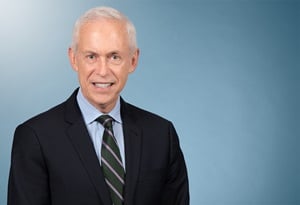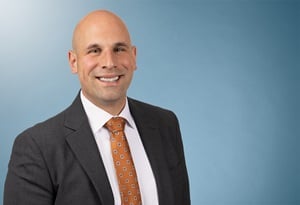The Election's Impact on Patients
As the dust settles on the 2014 mid-term elections and eyes turn toward the lame duck session and incoming 114th Congress, what do the results mean for patients and patient advocates?
At a high level, patient advocates are fortunate to enjoy strong bipartisan support on many issues, particularly funding for medical research supported by the National Institutes of Health (NIH). But with federal spending remaining constrained and the across-the-board cuts known as sequestration set to return in Fiscal Year 2016, significant threats to research funding and other health priorities remain on the horizon.
The 21th Century Cures Initiative being led by Energy & Commerce Chairman Fred Upton continues to be a bright spot for many patient organizations and other stakeholders. Upton won re-election despite some late-cycle blips that he could be vulnerable and will return to chair the committee for two more years before reaching the Republican caucus term limit of six years atop the panel.
With former Majority Leader Eric Cantor retired from Congress, Upton is now the most senior and visible Republican champion on medical research issues. He and other members continued holding regional events during the fall focused on Cures and committee staff is moving to develop a draft legislative package. One key question will be the scope of the draft legislation and if it can continue to attract bipartisan support. Another will be whether or not Cures catches hold in a now Republican-controlled Senate.
One potential scenario could be a two-step process in which a more limited Cures package moves this year, while other reforms are teed up for debate as part of the next user fee package, due in 2017.
Sequestration
Absent action by Congress, the sequester returns in full strength in Fiscal Year 2016. Patient advocates will recall the impact the cuts had on many priority agencies and programs, particularly National Institutes of Health (NIH) research grants, public health programs and related HHS initiatives. At the same time, there remains no easy answer to the sequester, and Congress has already demonstrated once that as unpalatable as it may be, sequestration proved easier than devising an alternative.
Patient advocates will likely want to focus on the impact the cuts had in FY 2013, particularly in the areas of lost opportunities. They may also want to use emerging challenges, such as enterovirus and Ebola, to make the case for adequate funding while being mindful to not overreach and be criticized for using a crisis to advance a political argument. Patient groups will also want to remain focused on the Food and Drug Administration (FDA) and the impact such cuts may have had in terms of slowing review and, ultimately, approval of medical products.
But overall, a Republican majority in both chambers would be expected to bring an even greater focus on restraining spending along with a proclivity to prioritize defense and security needs over domestic discretionary programs. New leaders of the Budget Committees and other key panels in both chambers will be another issue to watch as lawmakers take on the sequester and, perhaps, more longer-term challenges involving entitlement and tax reform.
Health Care Reform
Patients also can expect a dose of activity around the Affordable Care Act that could erode or slow some of the gains in health insurance coverage. While some members will be aggressive in pushing for outright repeal votes, a bigger question will be whether specific provisions will be in danger through actions to repeal, defund or significantly amend. The individual and employer mandates, the 30-hour work week and the medical device tax are examples of issues that may be addressed piecemeal. Funding for the delivery and payment reform work of the Center for Medicare and Medicaid Innovation established in the ACA also could be squeezed. Another area to watch will be if any states that have not expanded Medicaid will respond to Health and Human Services Secretary Sylvia Matthews Burwell's offer to engage in discussions around more flexible expansion alternatives.
Medicare Physician Payment Reform
Either during a post-election lame duck session or sometime within the first quarter of 2015, Congress is expected to address the Medicare physician payment structure known as the sustainable growth rate. Almost annually, Congress passes legislation that delays mandated physician payment cuts. Recognizing the system is broken, many in Congress have proposed reforming the payment system, but the biggest obstacle is the cost of such a permanent fix that could cost taxpayers $131 billion over 10 years. This issue is of obvious importance to seniors and disabled Americans who depend on Medicare, and such legislation could also attract other Medicare reform provisions, including benefit changes.
Children's Health Insurance Program (CHIP) Extension
The CHIP program provides health insurance coverage for low-income children who do not qualify for Medicaid coverage. Money for the program runs out in September 2015. Coverage provided under the program overlaps with coverage extended under the Affordable Care Act. While there are significant partisan disagreements on the ACA, the CHIP program has supporters on both sides of the divide. However, reauthorizing the program for another five years could cost $88.7 billion, according to legislation introduced by outgoing Sen. Jay Rockefeller. It's not clear how the ACA debate and expected budget battles will impact reauthorization, but Congress will need to address the program's long-term future to ensure millions of children continue to have access to health coverage.
New Congress, New Faces
New faces will grace leadership slots of many key committees of jurisdiction in both chambers. The Senate HELP Committee and Energy & Commerce Committee, both of which have jurisdiction over the NIH, FDA and other health agencies, will have new ranking members as HELP Committee Chairman Tom Harkin (Iowa) and Energy & Commerce ranking member Henry Waxman (California) retire. An intense intra-party battle is occurring in the House between Rep. Frank Pallone of New Jersey and Rep. Anna Eshoo of California, but in the Senate, Sen. Patty Murray is expected to take the position.
Both committees have advanced into law a number of research and public health bills over the past Congress. These include updates to existing muscular dystrophy, autism, children's graduate medical education and pandemic preparedness programs, as well as new laws in the areas of pediatric research and FDA reforms of the drug compounding and pharmaceutical supply chain sectors. Patient stakeholders will clearly want to see this record continue into the new Congress.
Key appropriations panels will also see some shakeup as Harkin's retirement creates an opening for the top Democratic slot on the Labor, HHS and Education Subcommittee for the first time since 1989. Similarly, the retirement of Rep. Jack Kingston from Georgia opens up the chairmanship for the subcommittee on the House side. We will also see a new ranking member of the Senate Agriculture/FDA Subcommittee and possibly some movement among House Republicans on that panel as well.
The influential Ways & Means Committee, which has jurisdiction over Medicare, tax and other programs, will have a new chairman, likely current Budget Committee Chairman Paul Ryan, and Sen. Orrin Hatch of Utah will become the new chairman of the Senate Finance Committee.
The material contained in this communication is informational, general in nature and does not constitute legal advice. The material contained in this communication should not be relied upon or used without consulting a lawyer to consider your specific circumstances. This communication was published on the date specified and may not include any changes in the topics, laws, rules or regulations covered. Receipt of this communication does not establish an attorney-client relationship. In some jurisdictions, this communication may be considered attorney advertising.



